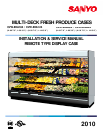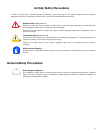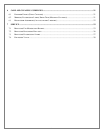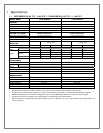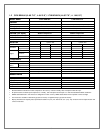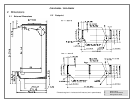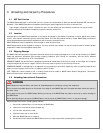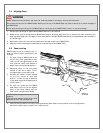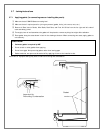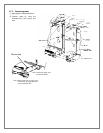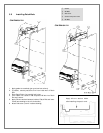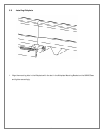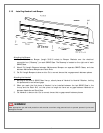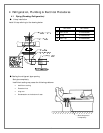
9
3 Unloading and Carpentry Procedures
3.1 NSF Certification
The SANYO Cases described in this manual are built to meet the requirements of American National Standard/NSF International
Standard 7. Each SANYO Case bears a nameplate identifying the type of application for which it was certified:
Type I display refrigerator/freezer: Intended for use in an area where the environmental conditions are controlled and
maintained so that the ambient temperature typically does not exceed 75°F.
3.2 Location
As noted above, the SANYO Cases described in this manual are design for the display of products in interior spaces with climate
control, with ambient conditions typically maintained below 75°F and 55% relative humidity. Proper SANYO Case performance
cannot be guaranteed when ambient temperature and/or humidity exceed this level.
SANYO Cases should not be exposed to direct sunlight or other sources of heat.
SANYO Cases should not be exposed to strong air currents, as these may disrupt the dual air curtains used to maintain proper
temperature inside the merchandiser display area.
3.3 Shipping Damage
All SANYO Cases and peripheral equipment should be examined for shipping damage prior to and during offloading. All SANYO
Cases and peripheral equipment goes through outgoing inspection upon leaving our warehouse, and the carrier assumes
responsibility for the safe arrival of our merchandisers.
APPARENT DAMAGE: Any obvious loss or damage should be noted immediately at the time of receipt on the freight bill or express
receipt and signed by the carrier’s agent. Failure to do so may lead to rejection of the claim by the carrier.
CONCEALED DAMAGE: If damage that is not apparent during unloading is found after unpacking, retain all packing materials and
submit a written request to the carrier for inspection within 15 days.
LOST ITEMS: Any claims related to lost or missing items must be made to SANYO North America Corporation, Commercial
Solutions Division within 48 hours of receipt of equipment.
3.4 Unloading Instructions & Precautions
WARNING
SANYO Cases are heavy and bulky, and require at least two people for unloading, moving, and installation.
Do not remove the wooden beam from the bottom front edge of each SANYO Case until the cases have been moved into place in
the store lineup.
Do not walk on the top of the SANYO Cases. Walking on the top of the SANYO Case may lead to serious injury and/or damage to
the SANYO Case.
Do not place anything on the top of the SANYO Case or use the top of any SANYO Case for short- or long-term storage.
Recommended Practices for Unloading Merchandisers:
1. Use a J-Bar (Johnson Bar) to lift one end of the SANYO Case.
2. Insert one or more dollies under the base leg.
3. Lift the other side with the J-bar.
4. (Optional) Insert one or more dollies.
5. Move the SANYO Case out of container.
6. Use dollies on both ends of the SANYO Case to move to lineup location after unloading from container.



